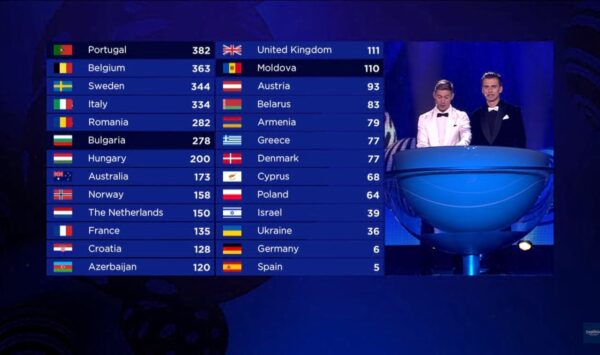Only two days before rehearsals begin, the European Broadcasting Union announces a slight, but probably decisive for the Eurovision final result, change to the jury voting procedure. But let’s examine it in detail…
Since the re-introduction of the national juries 10 years ago, in 2008, several changes have taken place, aiming at making the contest’s outcome as fair and objective as possible. Now and before Lisbon’s calling, the EBU has opted for strengthening the opinion of a group of jury members in relation to each judge’s opinion separately.
What do we exactly mean?
Up to now, the final ranking of each juror from his first to his least favourite entry was combined with the all the other jurors’ rankings, with the final set of 1-8, 10 and 12 points being awarded to the 10 entries with the highest average score.
By applying the above voting system, if, for example, one song was rated very highly by the 4 jurors and very low from the 5th juror, it could finally end up with receiving null points or a low score from the respective national jury.
But now it’s time for something new as this changes… From now on, each ranking position will have its own predetermined-by-the-EBU weight, as you can see in the diagram below. For example and with the Reference Group’s decision, the favourite entry of each juror will automatically awarded 12 points, the second favourite a little less than 12 points, gradually proceeding to his least favourite entry.
Within the respective national jury, the final score of each country will be the sum of the individual scores resulting from the ranking of each jury member. The 10 countries with the highest total scores will be awarded the 1-8, 10 and 12 points set of that jury, which will continue to have a 50% stake at the final outcome.
Below you may have a look at the diagram published by the EBU. The curve showcases the approximate weight of each ranking from 1 to 26. As you may see, the “exponential weight model” gives higher potential to the songs that have reached the top-3 positions of the juror’s ranking compared to those that can found in the lower ones.

Regarding this important innovation for the voting procedure, which had been approved by the Reference Group since January, the Executive Supervisor for the Eurovision Song Contest, Jon Ola Sand stated:
After each contest, we evaluate whether we can take steps towards strengthening the voting procedure. Sometimes these changes are big, sometimes they are small. With this change in how the jury score is calculated, we ensure that the songs ranked best are getting recognised accordingly and that the opinion of a group of jurors is valued higher than that of a single individual.
The change announced today has no impact on the logistics of the jury voting.
The names of the 5-member national juries of each participating country are going to be revealed next Monday, 30 April at 12:00 CEST. Stay tuned!




